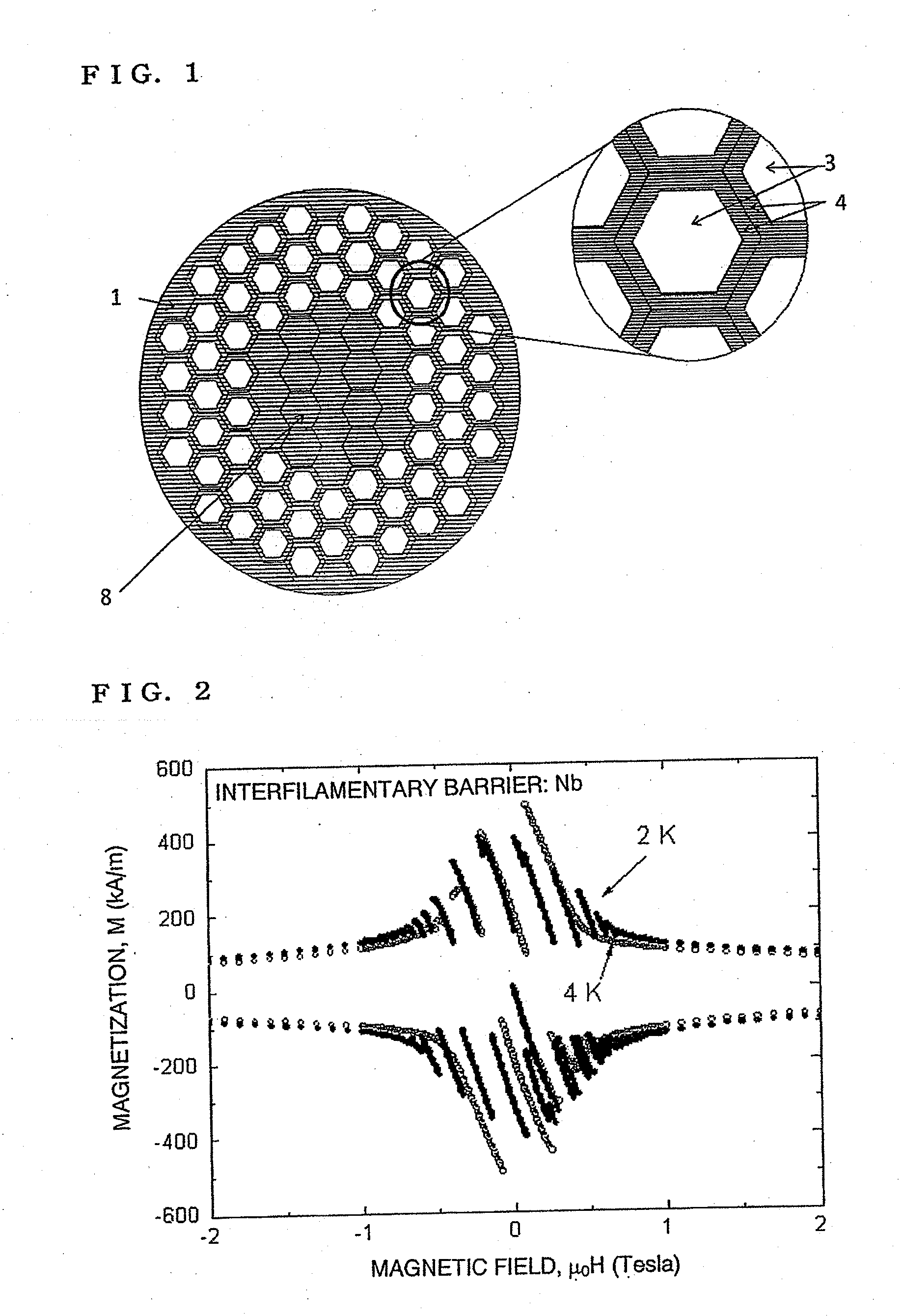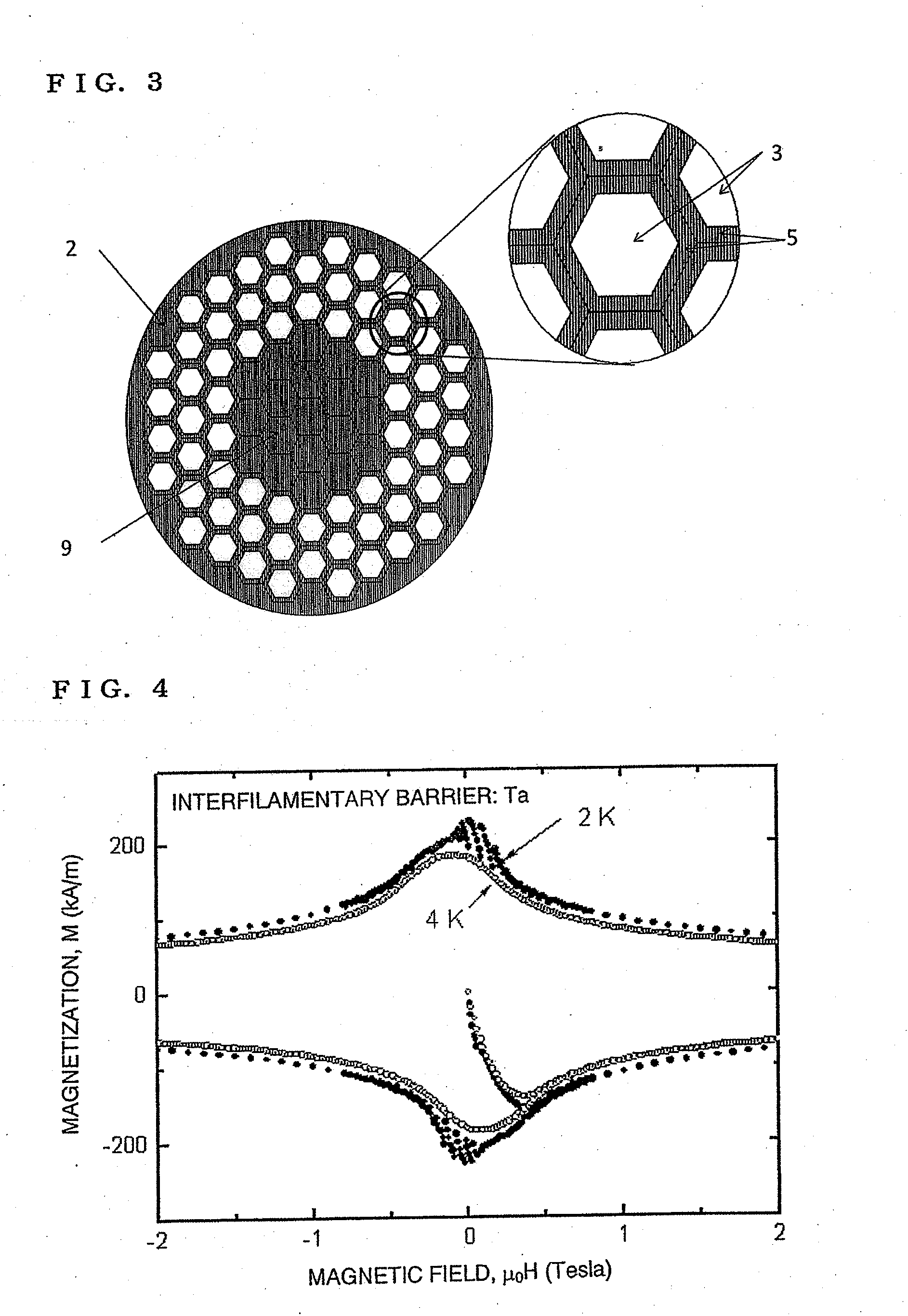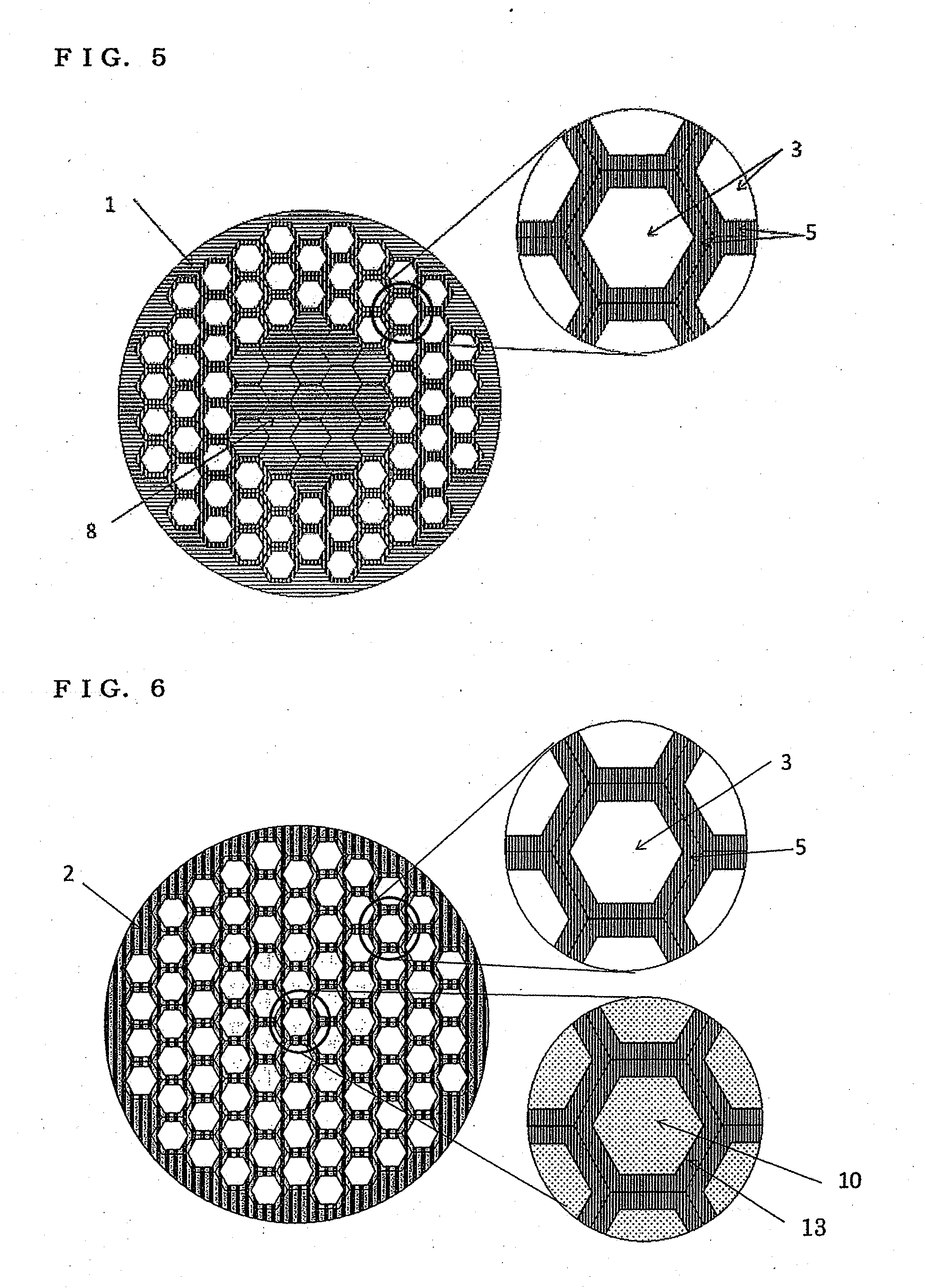Precursor wire for nb3al superconducting wire, nb3al superconducting wire, method for producing precursor wire for nb3al superconducting wire, and method for producing nb3al superconducting wire
a superconducting wire and precursor wire technology, applied in the direction of superconducting devices, superconducting conductors/cables, permanent superconductor devices, etc., can solve the problems of low magnetic field instability, and often occurring wire breakage, so as to reduce production costs, improve the drawability of precursor wires, and suppress low magnetic field instability
- Summary
- Abstract
- Description
- Claims
- Application Information
AI Technical Summary
Benefits of technology
Problems solved by technology
Method used
Image
Examples
first embodiment
(First Step)
[0109]In the first step, a Cu / Ta / (Nb / Al composite) single wire shown in FIG. 11 was formed.
[0110]A Ta metal sheet (which corresponds to a Ta partition 15 in the cross-section of the finally obtained precursor wire) was wrapped around an Nb / Al composite prepared by a jelly roll method or a rod-in-tube method (which corresponds to an Nb / Al composite filament region 3 in the cross-section of the finally obtained precursor wire), and the resultant composite was inserted into a Cu pipe (which corresponds to a Cu interfilamentary barrier 6 in the cross-section of the finally obtained precursor wire) and subjected to wire drawing to form a Cu / Ta / (Nb / Al composite) hexagonal single wire.
[0111]Meanwhile, in the embodiment shown in FIG. 12, a Ag / Nb / (Nb / Al composite) rod of single wire is formed using an Nb sheet (which corresponds to an Nb partition 14 in the cross-section of the finally obtained precursor wire) and a Ag pipe (which corresponds to a Ag interfilamentary barrier 7 in...
second embodiment
(First Step)
[0130]In the first step, a Cu / Ta / (Nb / Al composite) hexagonal single wire was formed.
[0131]In the same manner as in the first embodiment, a Ta metal sheet was wrapped around an Nb / Al composite prepared by a jelly roll method or a rod-in-tube method, and the resultant composite was inserted into a Cu pipe and subjected to wire drawing to form a Cu / Ta / (Nb / Al composite) hexagonal single wire.
(Second Step)
[0132]In the second step, a Ta dummy filament 9 covered with a Cu dummy-filament-covering-layer 16 was formed by inserting a cylindrical Ta rod into a Cu pipe and subjecting the pipe containing the rod to wire drawing, and subjecting the resultant rod to wire drawing using a hexagonal dice having the same size as that of the dice used in the above-mentioned formation of Cu / Ta / (Nb / Al composite) hexagonal single wire.
[0133]As mentioned above in connection with the first embodiment, the Cu outermost layer is finally utilized as an interfilamentary barrier 6, and therefore a ste...
third embodiment
[0146]Various effects of the invention are achieved by adopting as the interfilamentary barrier Cu or Ag which is extremely soft and highly ductile, as compared to Nb or Ta which is a high melting-point metal. In the first and second embodiments, it is described that the precursor wire can be remarkably improved in wire drawability by having no Ta / Ta interface which has conventionally caused the precursor wire to have poor wire drawability, and adopting as the interfilamentary barrier Cu or Ag which is extremely flexible and highly ductile, as compared to Ta.
[0147]On the other hand, the effect of the invention achieved due to the softness and ductility of the material for the interfilamentary barrier reflects not only on the wire drawability of the precursor wire but also on the tolerance to bending of the Nb3Al wire which has been subjected to the rapid heating, quenching, and transformation annealing. The properties of tolerance to bending strain are described in detail below.
[014...
PUM
| Property | Measurement | Unit |
|---|---|---|
| Temperature | aaaaa | aaaaa |
| Temperature | aaaaa | aaaaa |
| Temperature | aaaaa | aaaaa |
Abstract
Description
Claims
Application Information
 Login to View More
Login to View More - R&D
- Intellectual Property
- Life Sciences
- Materials
- Tech Scout
- Unparalleled Data Quality
- Higher Quality Content
- 60% Fewer Hallucinations
Browse by: Latest US Patents, China's latest patents, Technical Efficacy Thesaurus, Application Domain, Technology Topic, Popular Technical Reports.
© 2025 PatSnap. All rights reserved.Legal|Privacy policy|Modern Slavery Act Transparency Statement|Sitemap|About US| Contact US: help@patsnap.com



